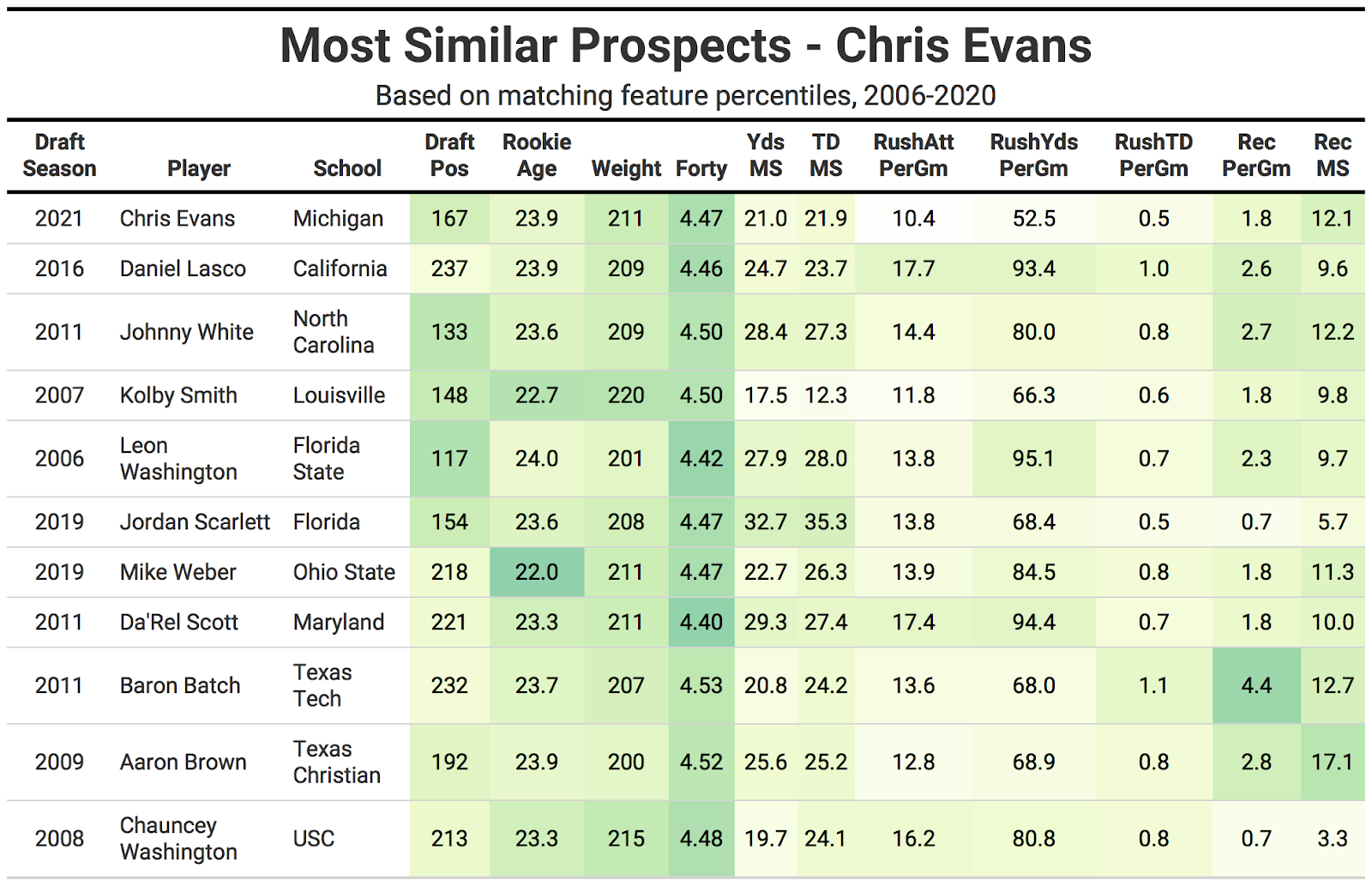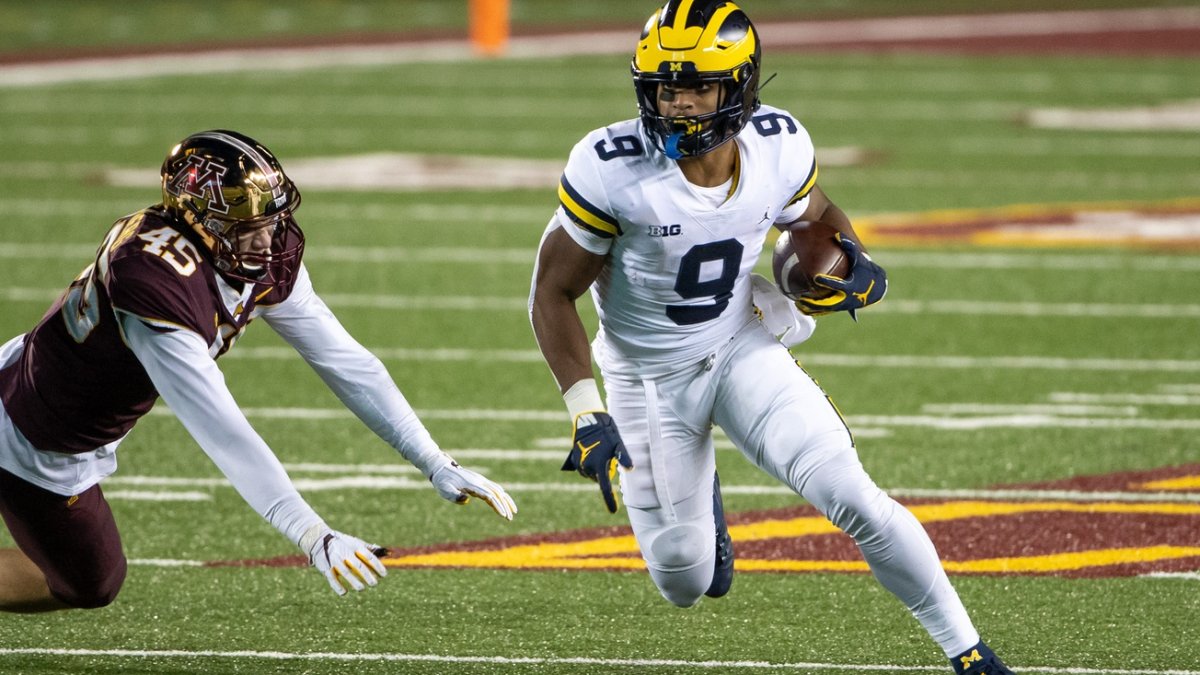Comparing current NFL draft prospects to those of years past is standard procedure in draft evaluation, though most comparisons are built on the memory recall and subjective opinion of the particular evaluator.
This will be the first in a series of articles comparing the 2021 draft prospects to prior years and picking out the most similar comps with a clearly delineated and quantifiable method.
PFF data scientist Eric Eager has done tremendous work building college-to-pro projections, which are built off the robust college data we’ve collected since 2014 and have been applied to exercises like building an “Analytics” Mock. In this analysis, I will use some of our advanced stats for comparison but primarily rely on traditional stats to go back further to compare the 2021 prospects to draft classes going back to 2006.
Without the NFL Scouting Combine this season, the important measurables like weight and 40-yard dash will be reported through the various pro days that will be taking place over the next few weeks.
View PFF's 2021 NFL Draft position rankings:
QB | RB | WR | TE | T | iOL | DI | EDGE | LB | CB | S
METHODOLOGY
The comps below were derived from a two-step process. First, I converted all the most statistically relevant stats and measurables to percentiles based on the thousands of prospects who have entered the NFL since 2006 at each position. Then, I filtered the total universe of past prospects by those who had draft positions, weight and 40 times within a 10th percentile in either direction of Chris Evans. For undrafted players, I assigned a numerical draft position of 300.
The rest of the matching features were transformed by principal component analysis (PCA). I found the closest statistically comparable players by the euclidean distance between the players' principle components, listed in the top 10 below.
The metrics for PCA are: rushing attempts per game, rushing yards per game, rushing touchdowns per game, receptions per game and market share of team receptions. All of these data points come from the prospect’s best collegiate season. I also matched the prospect’s market share of total team yards and touchdowns to past draft prospects.
For Evans' draft position, I’m using an estimate based on the mock data collected at GrindingTheMocks.com. For the weight and 40 time, I’m using the numbers from his pro day, with a 0.03-second penalty added to the 40 time to reflect the uncertainty of pro-day timed measurements.
Most comparable players
The glaring red flag in Evans’ profile is the decline in usage. Once a four-star recruit, he started with a promising true freshman season, amassing over 600 yards and four touchdowns. Evans improved those numbers slightly as a sophomore before a decline in production to only 73 rushing yards in 2020 as a redshirt senior.
The Michigan back has a strong athletic profile, clocking in at 4.44 seconds on the 40-yard dash and weighing 211 pounds. His other measurables were all excellent — he recorded a 40.5-inch vertical, 127-inch broad jump and 6.56-second three-cone drill.
Evans displayed big-play traits early in his career, along with the ability to explode through the hole and outrun defenders to the end zone.
Michigan running backs were unstoppable tonight:
Karan Higdon: 16 rushes 200 yards 2 TDs 🔥
Chris Evans: 13 rushes 191 yards 2 TDs 🔥 pic.twitter.com/KJ2eDYANU4— Go Blue Center (@GoBlueCenter) November 5, 2017

Daniel Lasco was similar to Evans as an older workout warrior, though even he had more substantial usage. Evans is uniquely low in terms of college production, with a max of 10 rush attempts per game in any season.
Exclusive content for premium subscribers

WANT TO KEEP READING?
Dominate Fantasy Football & Betting with AI-Powered Data & Tools Trusted By All 32 Teams
Already have a subscription? Log in




 © 2025 PFF - all rights reserved.
© 2025 PFF - all rights reserved.